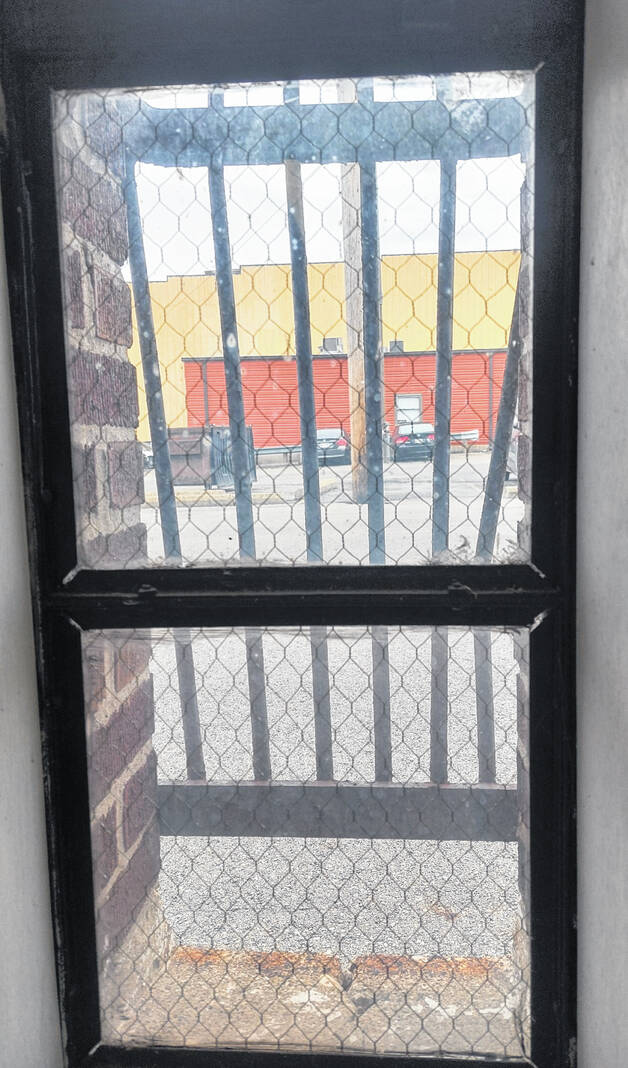
The old Armory bars will be removed in the renovation project for the comfort of employees.
Gail Allen | R-H photos
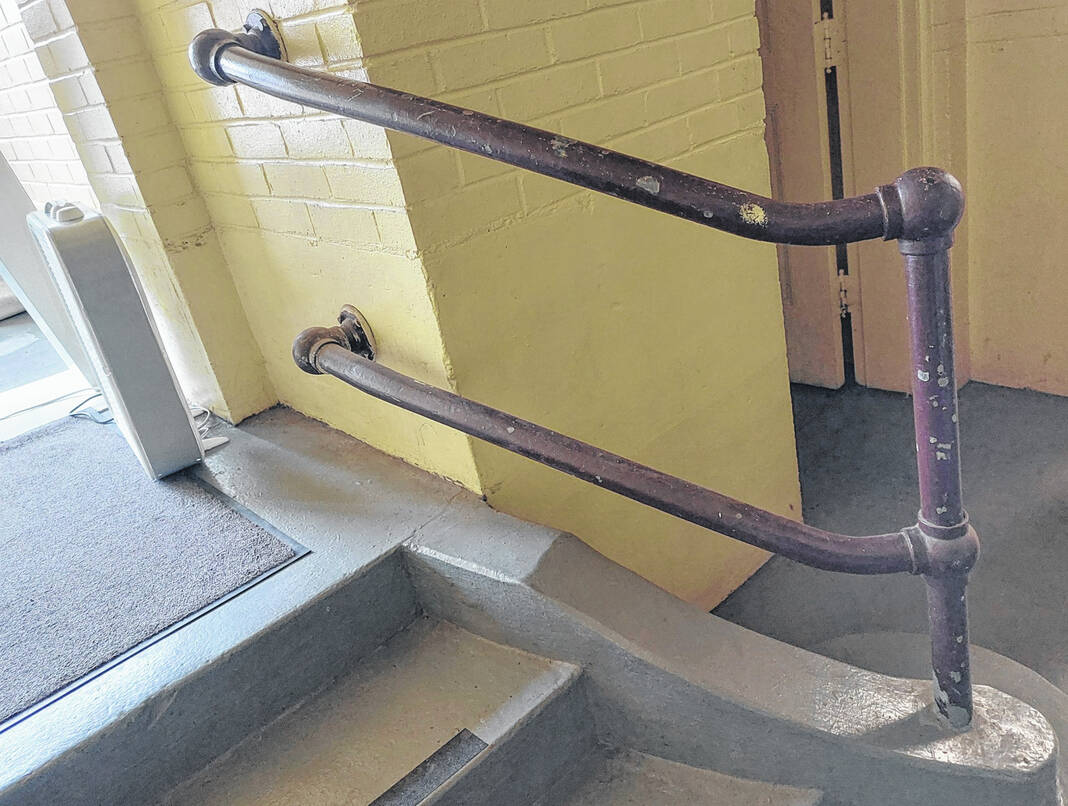
This historical railing will remain to keep the vintage value of the building.
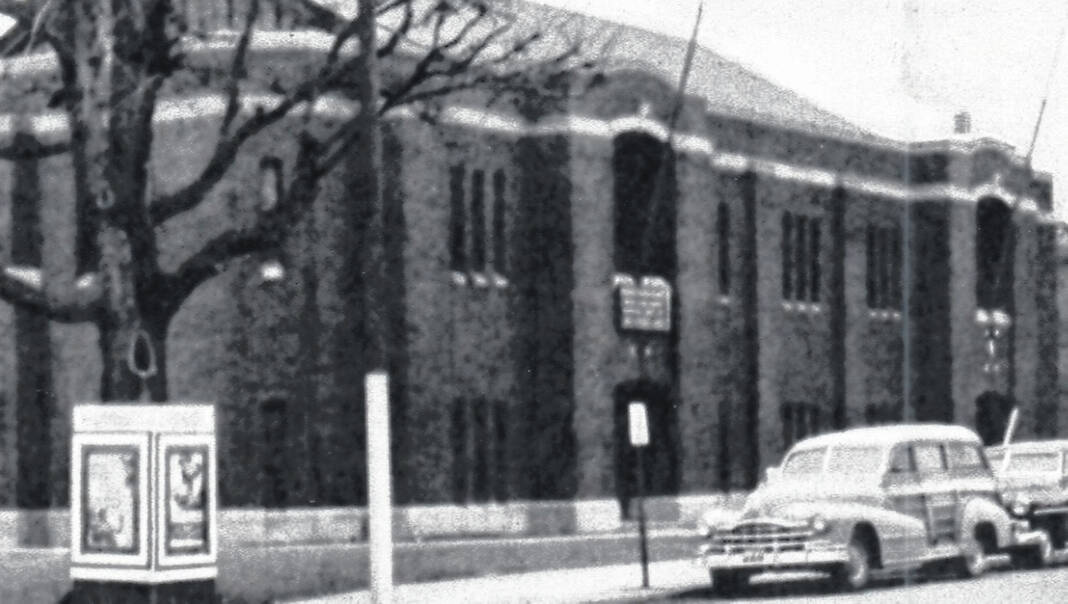
This is the look of the old Armory preceding 1940.

The heating ducts and piping will be covered by a drop ceiling during renovations.
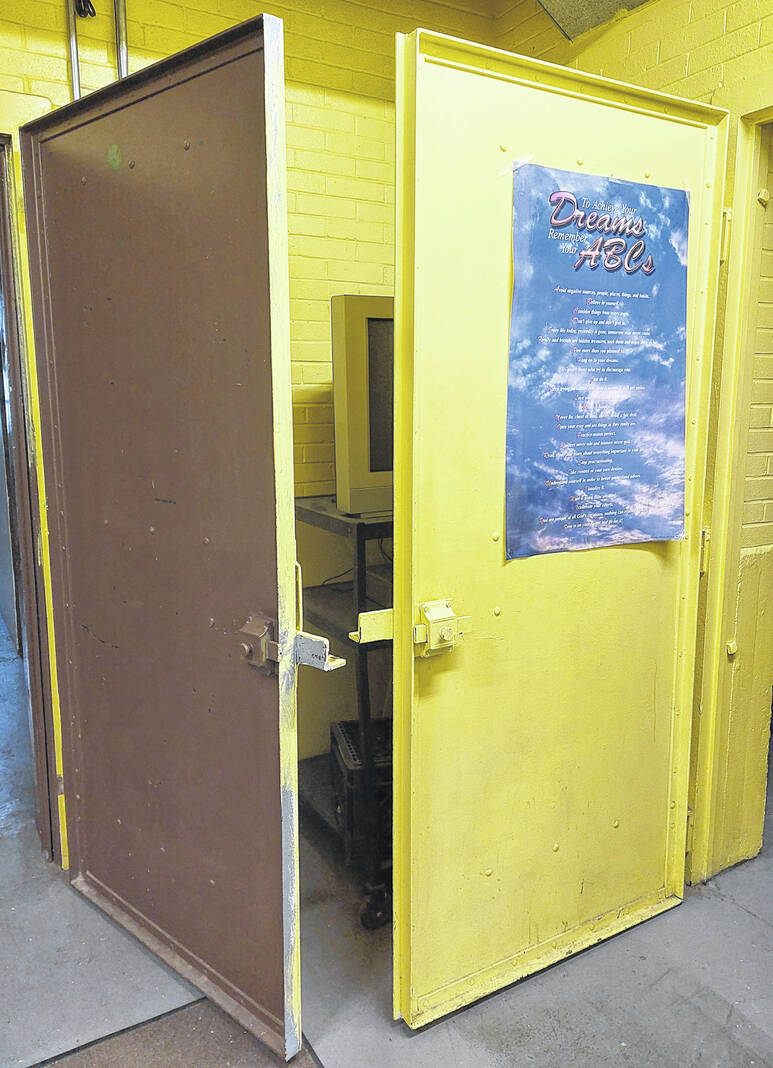
These old heavy doors will be removed during construction to open the space for offices.
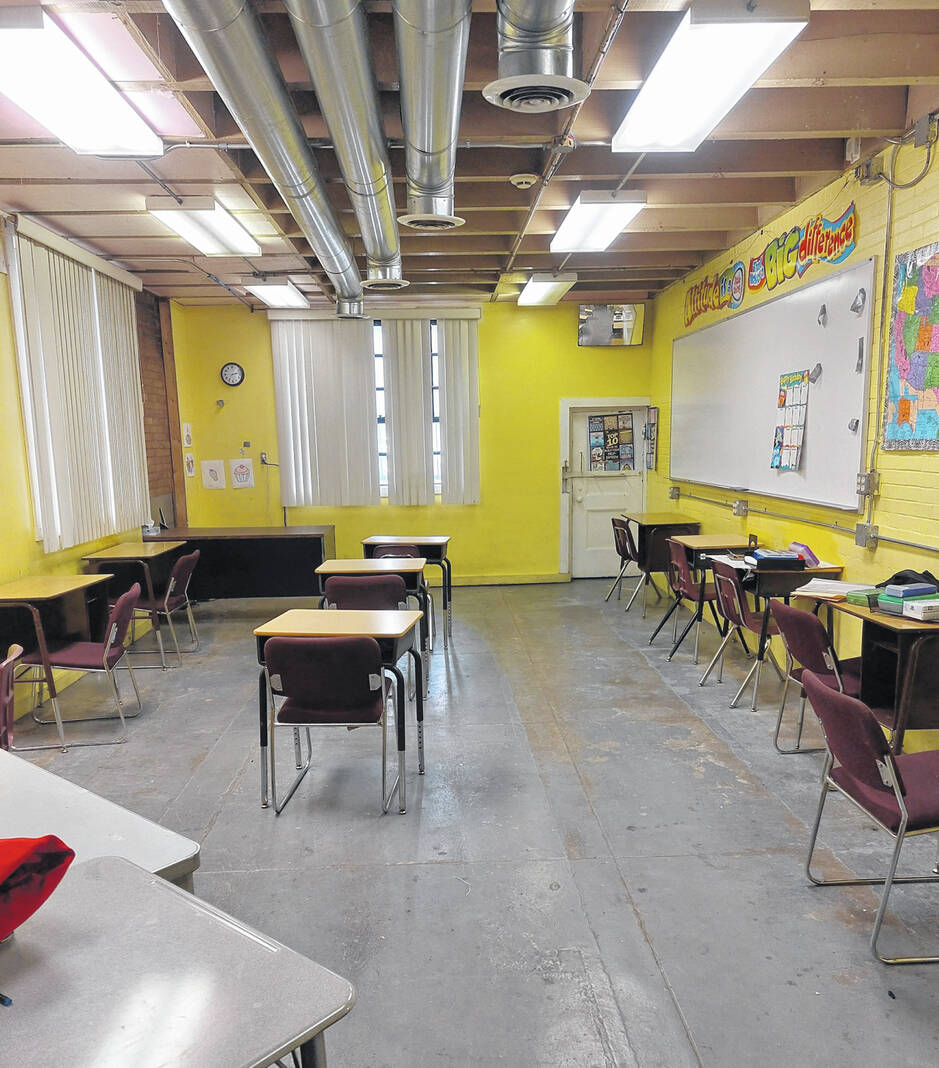
This is the old Alternative School area that will be converted into offices for the Metropolitan Housing Authority.
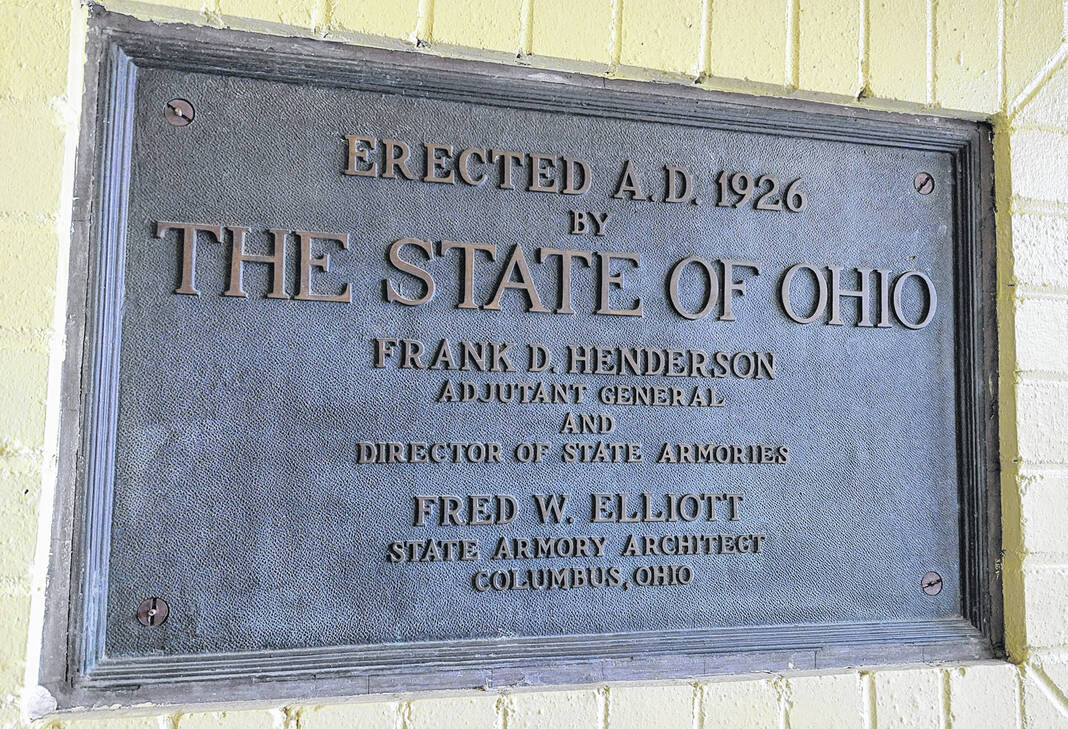
This plaque hangs in the entryway of the Armory commemorating its erection in 1926.
WASHINGTON COURT HOUSE — The Armory on East Street is going to undergo some major interior renovations, according to building official Craig Breedlove.
The Fayette County Building Department shares the building with the Fayette County Zoning Department and the Metropolitan Housing Authority.
Breedlove has been a registered architect for over 30 years, and is overseeing this project and will be coordinating the occupancy requirements.
The second floor of the Armory is occupied by the Historical Records Division holding old records of the Common Pleas Court, Probate Courts, and genealogical records. According to Breedlove, in the 1990s, an engineer was brought in to study the weight support of the flooring to house the enormous weight of the records stored there.
The Metropolitan Housing Authority offices will be moving into the area formerly occupied by the county’s Alternative School. The Alternative School vacated the building prior to the 2023 fall school opening session. Washington Court House City Schools and Miami Trace Local Schools have taken over educating those students.
The renovations will take place in three stages, Breedlove said. The office renovations will utilize all existing utilities and interior walls that are constructed of brick. A drop ceiling will be installed to cover ceiling pipes and heating ducts. The outside bars on the windows, when the building was utilized as an armory, “will be removed so the employees don’t feel like they are in jail,” said Breedlove.
Architectural plans are almost complete and Breedlove presented his renovation plan to the county commissioners on March 11. The renovations will have a $70,000 threshold for costs, discussed at the commissioners’ meeting.
The Metropolitan Housing Authority (MHA) entrance will utilize the old Alternative School entry door into a newly created public space. The original building step-railing will be kept in place, Breedlove said, to keep the historical look. The heavy interior old Armory doors will be removed during this first phase of interior reconstruction in the old Alternative School area.
The second phase of renovation will be to move the Zoning Office of Greg McCune, zoning inspector, to the front corner of the space now occupied by the MHA. That area is already carpeted and the same entry door will be utilized from the public entryway on the left of the building.
The first phase of moving offices will be easier, such as moving the MHA into a newly renovated space since it is now unoccupied, Breedlove said. The second phase of moving the zoning office will be convenient to occupy an already existing space in the MHA area.
Breedlove said the third phase will be a juggling-office project since those offices are currently occupied by the Building Department and will be renovated while employees are still in there. The Building Department will take over the current public space entryway and encompass the conference room into their utilized space. A small counter will be added near the zoning office area to greet public visitors, he said.
This project should be completed by the end of 2024, as a goal, according to Breedlove. The construction is all interior so bad weather will not be a factor.
For a little history of the building, the Armory was erected in 1926 by the State of Ohio, State Armory architect, Fred W. Elliott, after World War I. It was used as an armory to store ammunition, guns, rifles, etc. supplies, and a training facility for the Ohio National Guard. The Ohio National Guard dates back to July 1788.
The National Defense Act of 1916 established the authority of the President to call up guardsmen to federal service to their country. This took precedence over a provision of the Militia Act of 1908.
The Fourth Ohio Infantry was formed in 1918 and re-designated the 166th Infantry and M Company was formed in Washington Court House, according to the Ohio History Connection article on the Ohio National Guard.
The Ohio National Guard began reorganizing following World War I. Weekly drills in newly constructed armories across Ohio and annual encampments at Camp Perry, in Port Clinton, Ohio, sharpened military preparedness for guard soldiers.
According to an article published in the Record-Herald on April 14, 1977 by Phil Lewis, Staff Sgt. Michael McCormick was placed on duty at the Armory five days a week to be in charge of the local brigade in Fayette County, the 38th Infantry Division. He resided in the community and wanted to keep the local unit functioning with the current 82 guardsmen staff. McCormick handled all the personnel records, payroll, and promotion paperwork at that facility, in addition to tests for prospective guardsmen.
The 166th Infantry Regiment was reorganized in 1946 as part of the Ohio National Guard. Reorganized again in 1959, and again in 1963, and finally in February 1968 into the 38th Infantry Division which McCormick was heading. Many reorganizations and movements of guard divisions took place after his tenure.

